Sundance Second Half Roundup
Crossfader Editor-in-Chief Thomas Seraydarian, Film Editor Sergio Zaciu, and staff writer Ian Campbell ‘danced to the bitter end! Here is a roundup of the films they caught during the second half of the festival (ordered worst to best)! Be sure to check out the first half impressions here.
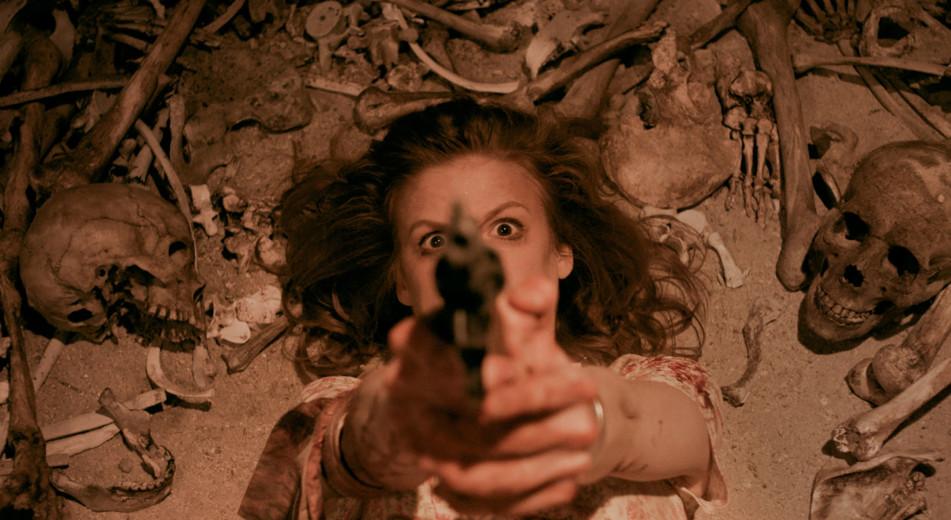
25. CARNAGE PARK
Director: Mickey Keating
Genre: Horror
Unapologetically derivative of ‘70s “killer thrillers,” CARNAGE PARK is a decent amount of fun, even if that fun is consistently mindless. What’s perhaps most frustrating is that at first we seem to be settling in for a film that will switch genres on us a la WITCHING AND BITCHING; by killing off would-be bank robbers Scorpion Joe and Lenny so early in the film, the director eliminates any possibility for character beats wherein the violent criminals must learn to team up with Vivian to face Wyatt Moss’s far greater evil. This posits it as the same experience as any selection of the survival horror genre, and unless there’s some meta-commentary going on intended to replicate the recyclable nature of the independent horror cinema of yesteryear, it renders itself forgettable. That being said, it’s refreshing to have a female protagonist taken at face value with no reference made to her gender, and the gore manages to transcend its low-budget trappings. Although a pleasant enough 80-something minutes, there’s no real reason to seek this one out. [Thomas Seraydarian]
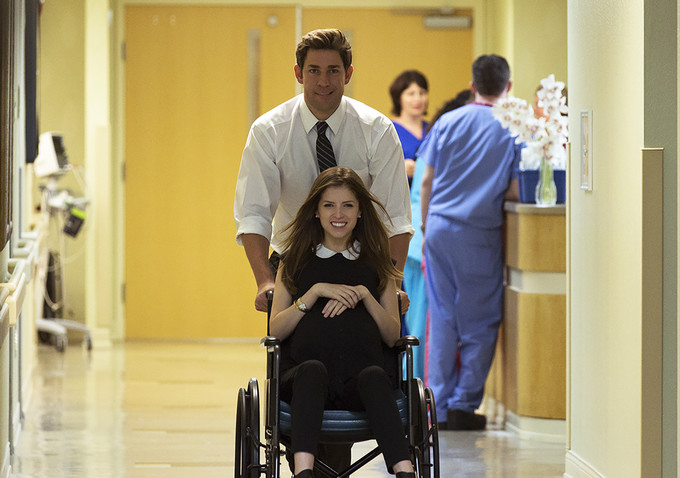
24. THE HOLLARS
Director: John Krasinski
Genre: Drama, Comedy
Jim did it again. Or I guess, really, John did. John Krasinski’s THE HOLLARS is a marked improvement from his first feature BRIEF INTERVIEWS WITH HIDEOUS MEN, but nothing that is worth writing home about (yet somehow I’m forced to). THE HOLLARS acts as a strange mirror to OTHER PEOPLE. Both films feature sons returning home to families not all together welcoming. Both have matriarchs struggling with and ultimately succumbing to cancer. But while OTHER PEOPLE is available to navigate the sea between comedy and drama and come out still somewhat sharp, THE HOLLARS finishes out as a sort of mush save for a few key performances from its supporting cast. The combined efforts of Richard Jenkins and Margo Martindale as the father and mother of the Hollar clan almost does enough to save the film. Hell, even the strange casting of Sharlto Copely as the doofus brother had its occasional sparks. But the utter waste of Charlie Day and the complete lack of dramatic chops from Krasinski weigh heavy on the whole feature to the point that it’s never able to rise above just being okay. That may be fine for a family dealing with cancer, but not for a feature film. [Ian Campbell]
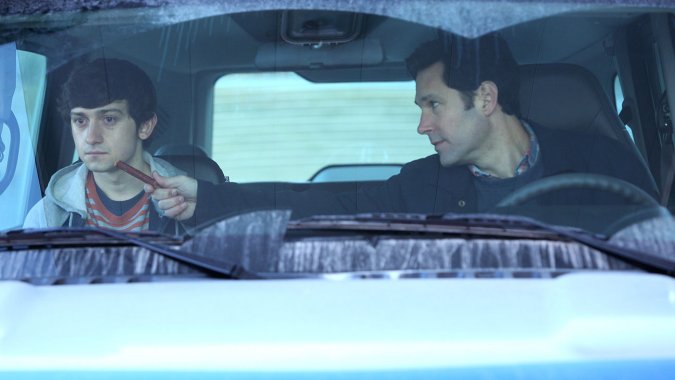
23. THE FUNDAMENTALS OF CARING
Director: Rob Burnett
Genre: Drama
The best thing that THE FUNDAMENTALS OF CARING could do is launch Craig Roberts (SUBMARINE, NEIGHBORS) into true international stardom. Featuring another take on the “white person gets a terminal illness and teaches another white person about life” subgenre that is all the rage at Sundance, THE FUNDAMENTALS OF CARING pairs Paul Rudd (in a surprisingly subdued performance) with Craig Roberts as caregiver and boy-suffering-from-muscular-dystrophy on a roadtrip to make good with past trauma. Along the way they pick up bad girl Dot (Selena Gomez in a pretty fantastic comedic role) and pregnant mom Peaches (Megan Ferguson doing God’s work with a one-dimensional role), who are also looking to travel across the country and reconcile elements of their past. Director Rob Burnett has essentially constructed a sort of pseudo-Stagecoach focused around fatherhood and trauma, with jokes that work well (especially the nicely dark one’s surrounding the illness at the center of the film) and drama that often misses. Ultimately, THE FUNDAMENTALS OF CARING is a nice film to watch, but it never becomes a film that rises above the schmaltz and cliches associated with its genre. [Ian Campbell]
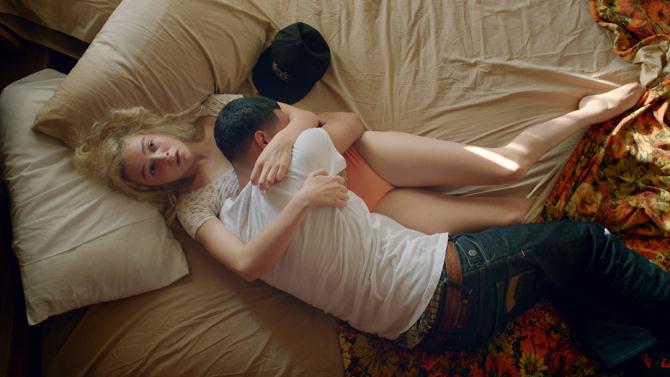
22. WHITE GIRL
Director: Elizabeth Wood
Genre: Drama
On first blush, WHITE GIRL seems to be a film that favors style over substance. Unashamed to be brash, bold, and revel in the hedonism of its main character, Leah, director Elizabeth Wood crafts a story of love, drugs, and the unfortunate mix of the two. Right after watching this film I was not sold. Leah is a bold and confident woman who makes a lot of mistakes but is ultimately doing what she wants. Elizabeth Wood seems like a badass director. But why should I care about the story of WHITE GIRL even if it has a killer ending? It’s only when viewed through the lenses of class and race that the true picture of WHITE GIRL comes into focus. Leah is the antagonist of the film, essentially destroying the life of her drug dealer boyfriend in her attempts to “save” him. She’s not just a fun-loving college sophomore, but a physical embodiment of gentrification and its destructively transformative effect on New York. Whether this was actually Wood’s intention remains comfortably uncertain, but I’d prefer to believe that she was aware of this reading. Not the best film of the fest but certainly one of the more interesting ones of its second half, WHITE GIRL is dark, bold, and with a little examination, far deeper than it would like to admit. [Ian Campbell]

21. CHRISTINE
Director: Antonio Campos
Genre: Drama
The unfortunate fact that plagues CHRISTINE throughout its runtime is that Rebecca Hall does a fantastic job of portraying the awkward and uncomfortable character of Christine Chubbuck, the news reporter who committed the first on-air suicide, but that fact alone doesn’t save the protagonist from alienating the audience. As we watch Christine deadpan her way through cringeworthy interaction after cringeworthy interaction, we find ourselves with steadily taller hurdles to clamber over in order to stay invested. Furthermore, each character seems resolutely committed to wearing their heart on their sleeves and bluntly stating each plot point or point of contention, contributing to an overall sense of pampering and coddling the audience through what we know will be a dark tale. The film eventually manages to break our hearts again and again as Christine suffers a long string of personal and professional failures that contribute to the imminent dread of the third act, but the tangible buildup to the suicide is too little, too late. [Thomas Seraydarian]
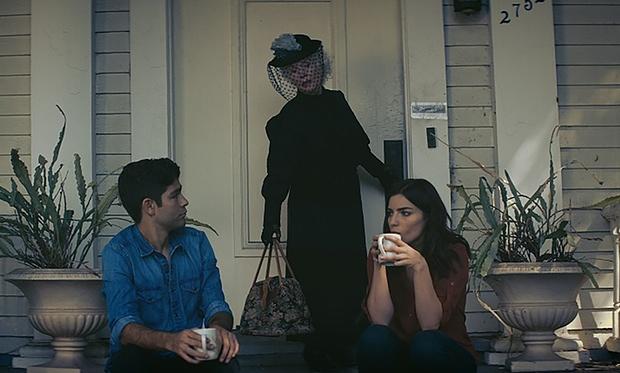
20. TRASH FIRE
Director: Richard Bates Jr.
Genre: Comedy, Horror
TRASH FIRE is one of the most head-scratching films included in the festival lineup. Both its main calling card and its biggest flaw are the fact that the director ostensibly had no idea what kind of film he wanted to make, which can at least be said to keep the audience on their toes, as they’ll feel the same. What at first appears to be a psychological horror film about a tortured man dealing with killing his parents and disfiguring his sister in a fire turns into a trip back home to reconnect with the dysfunctional remnants of family, making promises of creepy house arrest. Although invested up to this point due to the disparate nature of the scattered plot points and multiple red herrings, TRASH FIRE loses steam once it transitions into a dark comedy about the matriarch of the family (who actually started the fire) continually having her attempts to finish what she started foiled, as this throws any hope for narrative cohesion to the wind. Occurring well into the second act, our expectations are foiled once again when the film ends in a big ol’ family bloodbath. Although genuinely funny in certain parts, this film is only tangentially horror, which makes the cheap jump scares it employs almost entirely arbitrary. A mildly entertaining experience while it’s happening, TRASH FIRE fades from memory soon after. [Thomas Seraydarian]
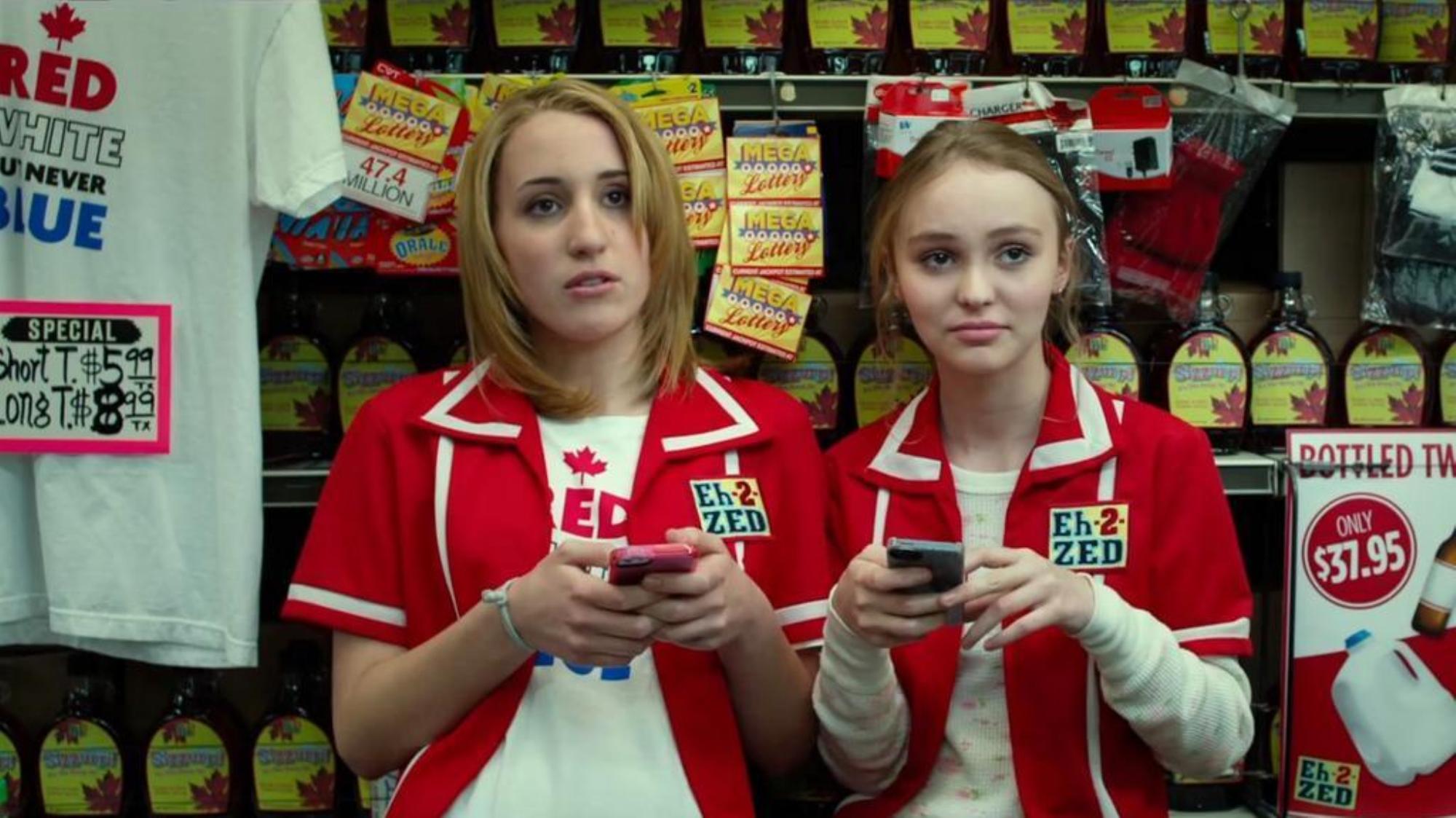
19. YOGA HOSERS
Director: Kevin Smith
Genre: Comedy, Action
Alright, folks, I’ll admit it: I err on the side of being a Kevin Smith apologist. Nevertheless, YOGA HOSERS was so resolutely not what I expected that I walked away pleasantly surprised as opposed to disappointed (a feeling far too common in the man’s latter-day career). Willfully admitting that it’s a “bad” movie, Mr. Smith isn’t entirely incorrect; a film about two teenage girls defeating an army of sentient sausages (stuffed with sauerkraut, of course) engineered by the last remnant of Canada’s little-known Nazi party is a hard sell in any market. That logline will already ensure whether or not this film is for you, but more open-minded viewers will find that there is a surprising amount that the film does well. Perhaps most notable is the fact that for once, there’s too much story to cram into its lean runtime, a full about-face from Smith’s penchant for stretching a 20-minute concept to four or five times its ideal length. This keeps wind in the narrative sails, with all plants and motifs being successfully paid off. Now, of course things aren’t all wine and roses; the “#teen” dialogue is vomit-inducing, there’s only so much Minions-eque jabber offered up by the sausage army that one can take, and the third act sets itself up as an entertaining action piece only to resort to Smith’s usual talky antics. I can’t call YOGA HOSERS a good movie, but it’s the director of CLERKS making a SCOTT PILGRIM VS. THE WORLD clone about fascists made out of meat, and with the proper . . . preparations . . . I’d say that that might just be worth 88 minutes of your time. [Thomas Seraydarian]

18. WILD
Director: Nicolette Krebitz
Genre: Drama
If one thing can surely be said in WILD’s favor, it’s that government subsidies for filmmaking clearly in no way hinders outlandish artistic expression. Nothing about WILD sounds like a successful film on paper, and for the most part, it really isn’t a film worth recommending to general audiences. But every now and then this tale of a girl’s sexual awakening through her bestial relationship with a feral wolf is not only visually impressive, but also undeniably unique. When one thinks of countries funding filmmakers for their visual expression, the expected results are traditional awards-bait; a Holocaust film from Germany, a piece on communism from Eastern Europe, and so on and so forth. Yet WILD doesn’t fit into any neat category, and that’s what makes it special. It’s uncomfortable, it’s hip and fresh in its execution, and yet although all of these aspects sound like they would result in a great piece of cinema, WILD’s biggest pitfall is that it has so much trouble balancing its two extremes: the more formalist portrayal of on-screen beastiality and the realist aspects of the protagonist’s everyday life. The former is always so much more exciting that the latter, which feels like filler for most of the film, and consequently the lackluster narrative causes much of the film to crumble under its undeniably beautiful foundation. [Sergio Zaciu]
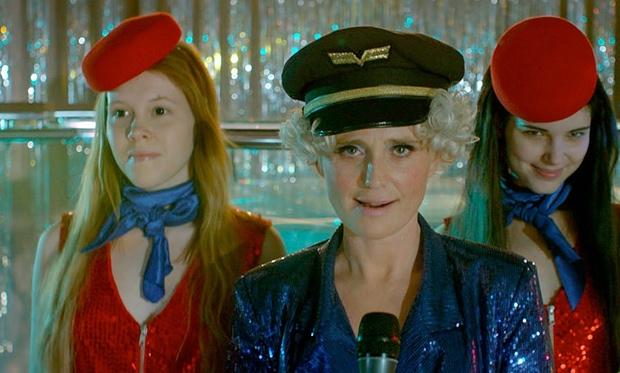
17. THE LURE
Director: Agnieszka Smoczynska
Genre: Horror, Musical
It’s not every day that audiences are exposed to Polish cinema that doesn’t imitate the somber, perfectionist stylings of IDA or the dry-wit cynicism of Polanski, so when one hears that the country’s film commission has subsidized a mermaid-horror-musical, it’s pretty much a must-see for the festival. Inspired from the mythological roots of sirens and their devilish hunt for male flesh, THE LURE tells a story of two mermaid sisters who become singers in a cabaret until love begins to tear them apart. Hypothetically, the concept is shockingly brilliant, especially when considering that just about every mythological creature has received a standalone picture except for sirens. Unfortunately, THE LURE quickly loses a lot of steam as its narrative begins to fade into incomprehensive drivel. Nonetheless, the film’s stylings are so unique and exciting that it’s a pleasure to consume from start to finish, and its thorough and quite catchy nu-disco musical numbers make for an entertaining watch. Having said that, though, it is quite a disappointment going into this film anticipating a musical, because it ultimately plays out more like a patchwork of cabaret performances that loosely string together a narrative, as if the filmmakers had a rough idea for a film but shot multiple music videos instead. As a result, musical numbers are often supported by the plot and characters don’t spontaneously jump into choreographed song-and-dance. Nonetheless, the film’s horror trappings are well executed and its actors do a fine job commanding the screen. It’s simply a film that deserved a rewrite or two before heading into production [Sergio Zaciu]
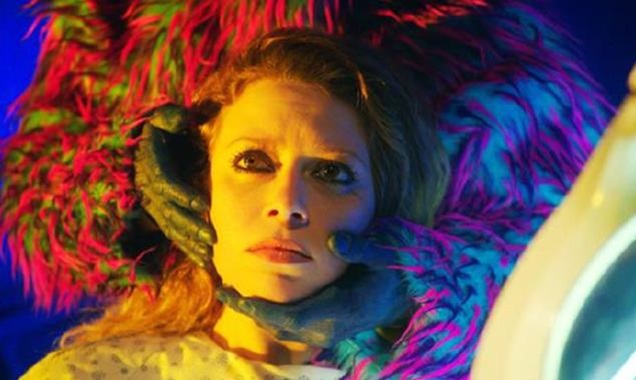
16. ANTIBIRTH
Director: Danny Perez
Genre: Horror, Comedy
Claustrophobic, psychedelic, and really, really, really fucking weird, ANTIBIRTH is a generally satisfying throwback to the cult body horror of the ‘80s. Telling the story of Lou, a drug and alcohol-addicted woman who becomes impregnated with an alien lifeform due to the fact that her internal composition meets the toxicity of the alien’s homeworld, Danny Perez’s first bona fide feature is as comparable to Cronenberg as it is to the darker sketches of Tim Heidecker and Eric Wareheim. Natasha Lyonne’s unwavering indifference makes her the ideal protagonist for the horrific mutilations that her body suffers (anyone wanting to ensure that teens stay abstinent should screen this film) and the film always makes sure to administer some comedic sugar to help the medicine go down. Unfortunately, the successfully cultivated atmosphere of a bad acid trip carries the negative side effect of a narrative that’s unbalanced in both plot and pacing, and the second act significantly overstays its welcome while introducing a multitude of unnecessary tertiary characters. However, nothing can stop the hallucination sequences from being some of the most fun of recent memory, in addition to the ending being one of the most gleefully surprising I’ve seen in independent horror. [Thomas Seraydarian]

15. FIRST GIRL I LOVED
Director: Kerem Sanga
Genre: Drama, Romance
A story of first loves and the destructive nature of jealousy and fear, FIRST GIRL I LOVED elevates high school drama with a story worthy of its feature length. Writer/director Kerem Sanga shows a tremendous amount of tact telling what is foremost the story of two young women who fall in love—it’s both surprising and reassuring. With a creative, fugue-like structure, FIRST GIRL I LOVED tells the story of Anne, a high school student working on the yearbook, her jealous best friend Cliff, and the softball star Anne falls in love with, Sasha. While a fairly common storyline at Sundance, FIRST GIRL differentiates itself through its performances and by using concepts familiar to teenagers in interesting ways (namely social media). Dylan Gelula shines as Anne, crafting a character who is refreshingly confident in her sexuality but still vulnerable to a lot of the pitfalls of modern teenagerdom (she’s also made a stark about-face from her performance as Xanthippe on UNBREAKABLE KIMMY SCHMIDT, as well), and Mateo Arias brings a nuance and professionalism to Cliff, a role that could be one-note. All in all, FIRST GIRL I LOVED is both stylish and sweet, and may have just made a star out of Dylan Gelula. [Ian Campbell]
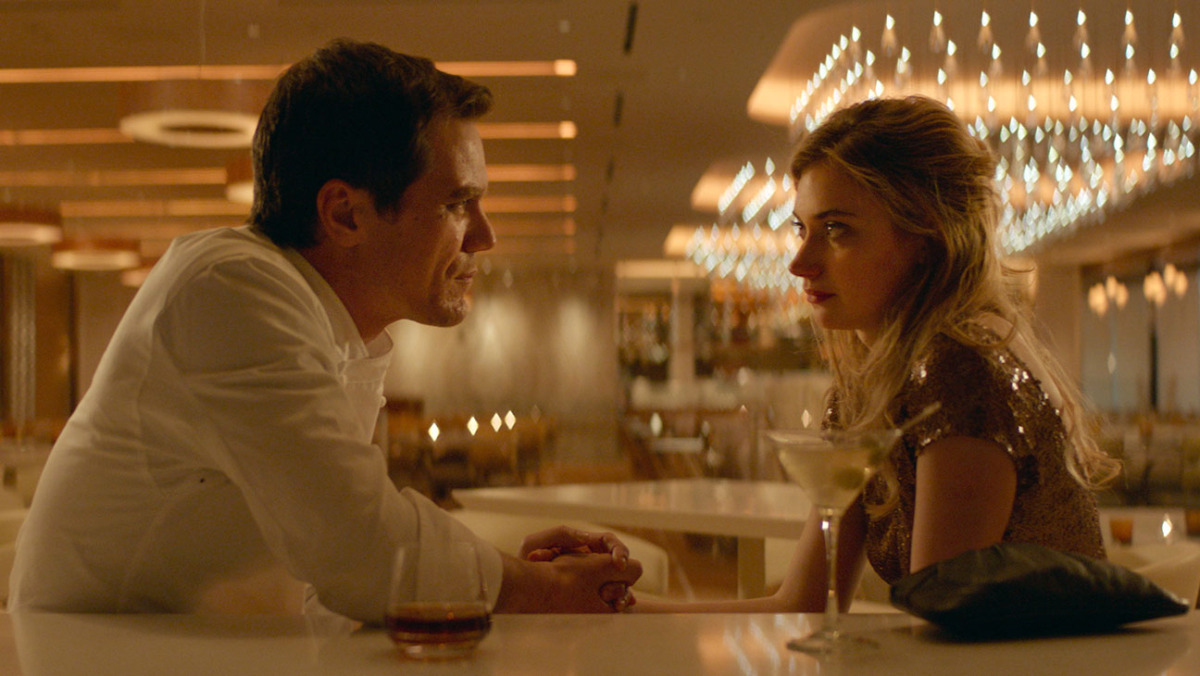
14. FRANK & LOLA
Director: Matthew M. Ross
Genre: Drama, Romance
The long and short of it is that Matthew M. Ross’s debut feature, FRANK & LOLA, is delightfully acted by Michael Shannon and Imogen Poots in their titular roles, but possesses a convenience-laden story full of egregious jumps in logic. Telling the story of Frank and Lola, a couple that soon becomes fraught with violent distrust due to Lola’s dishonest and abusive past, the film does a great job of making its audience dislike both of its protagonists, forcing us to grip on white-knuckled as the train rapidly plunges off the rails. Reminiscent of GONE GIRL throughout, the film manages to keep up and steadily progress its tension, although the back-and-forth in terms of whether we trust Lola undergoes one too many cycles. In addition, it becomes unequivocally ridiculous just how easily Frank is able to make the round trip between Las Vegas and Paris in the hopes of tracking down Alan (Michael Nyqvist), a man Lola has accused of rape, with the final standoff between the two existing as a letdown. Nevertheless, FRANK & LOLA has a notable pulpy charm, and the final scene is undeniably satisfying. [Thomas Seraydarian]
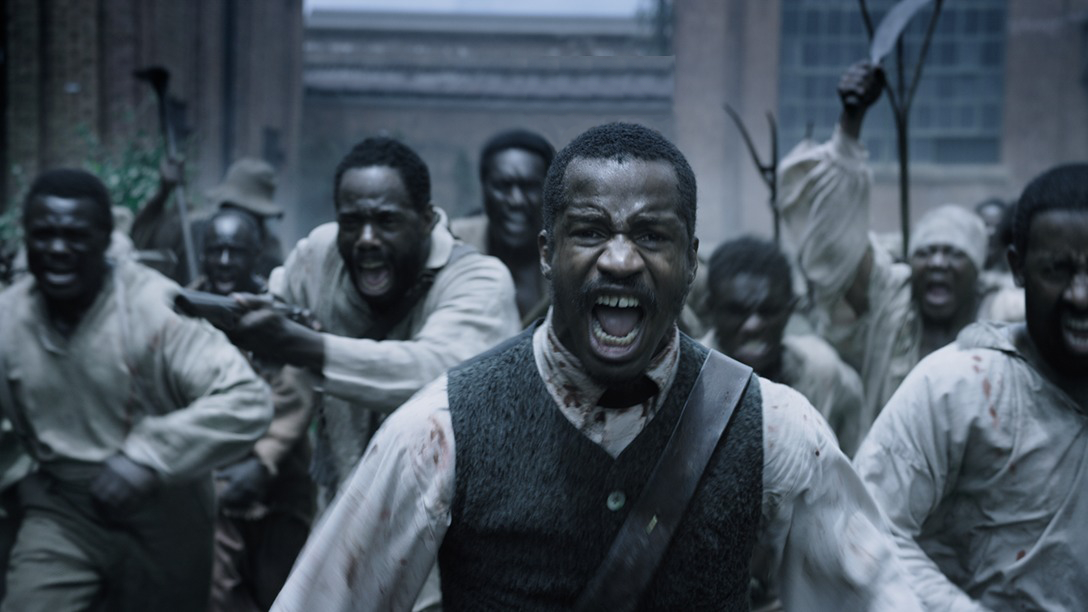
13. THE BIRTH OF A NATION
Director: Nate Parker
Genre: Drama
When I ask anyone what they think of BRAVEHEART, it’s usually nothing positive. Yet when exiting the screening room for THE BIRTH OF A NATION, it seems that audiences haven’t noticed that they just watched an all-black remake of Mel Gibson’s film, following everything from its insistence on religious iconography to its martyr climax. Nate Parker’s directorial debut, chronicling the life of slave-turned-revolutionary Nat Turner, is unquestionably the biggest deal of the 2016 Sundance Film Festival (having been sold for a whopping $17.5 million to Fox Searchlight, the biggest paycheck in festival history). And yet, it’s not particularly great. Clichéd writing and graphic violence are consistently a step under Steve McQueen’s unflinching yet tactful work on 12 YEARS A SLAVE, and blue-hued dream sequences render ethereal visions into fairytale escapism that leaves one wondering where Galadriel is hiding. But the worst offender here is Nate Parker himself, a director who ultimately fell victim to the fact that he cast himself as the lead character. Consequently, the acting is never refined enough, and the camerawork wanders aimlessly in an attempt to find an artistic bearing because Parker isn’t behind the lens to fine-tune his aesthetic decisions. The entire project plays out like it’s been written for an elderly white audience, agonizingly try-hard in its desire to expose viewers of their white privilege, pandering to every lowest common denominator that one would expect from a revolutionary epic. Halfway into the film, I asked myself how long it would take until I’d have to sit through a somber montage underscored by Nina Simone’s rendition of “Strange Fruit.” And lo and behold, that’s exactly what happens in the film’s third act. Nothing here feels particularly genuine, despite that all the right intentions are there. Following the identical beat structure to BRAVEHEART, THE BIRTH OF A NATION’s biggest accomplishment is its final 15 minutes, but unfortunately, the cathartic climax doesn’t make up for its limp first and second acts. [Sergio Zaciu]
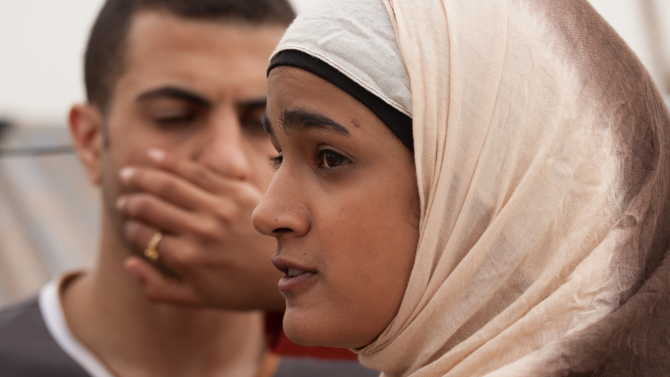
12. SAND STORM
Director: Elite Zexer
Genre: Drama
The biggest thing going for SAND STORM is its intimate portrayal of an almost entirely ignored culture and community. Telling the story of a Bedouin mother and daughter who must deal with the fall out of the family patriarch marrying a second wife, Elite Zexer’s debut feature is most impressive when it delves into the intricacies of a world far removed from the sensibilities of most modern-day Americans. Both mother Jalila and daughter Layla are impressive female protagonists, each demonstrating their own brand of independence and internal steel. Further thickening the plot is the fact that Jalila’s strength is one of remaining stalwart while Layla’s is one of rebellion, throwing the two against each other as they attempt to navigate the restrictive environment that they were born and raised in. Unfortunately, a film this narrow in scope can’t help but begin to feel somewhat exclusive, and it doesn’t possess the mass dramatic appeal of a film such as A SEPARATION. That being said, the ending is appropriately crushing, and if the viewer is willing to be open to the drama present in seemingly banal activities of daily life, they’ll walk away impressed. [Thomas Seraydarian]
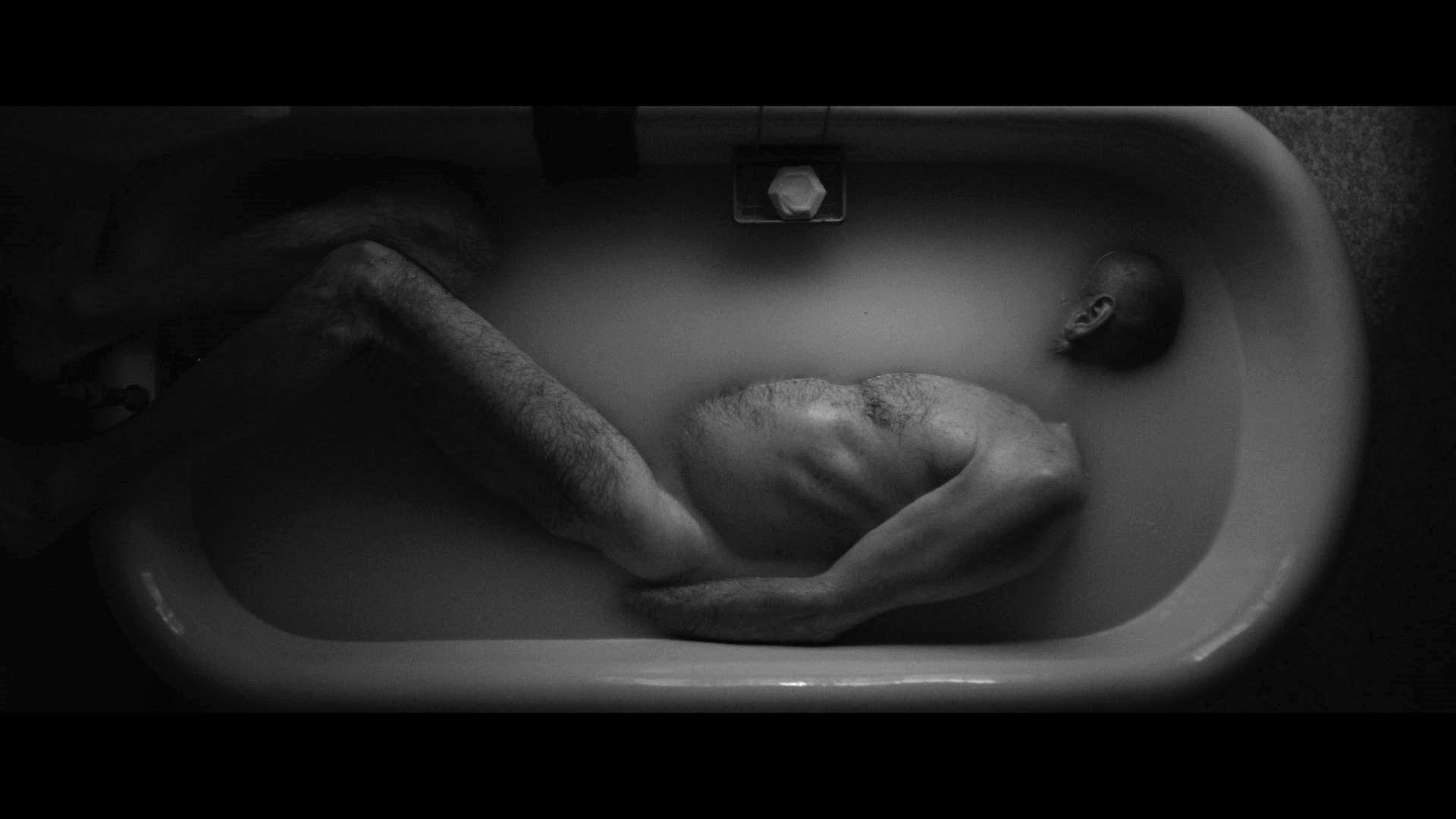
11. THE EYES OF MY MOTHER
Director: Nicolas Pesce
Genre: Horror, Drama
Walk-outs abound. THE EYES OF MY MOTHER is certainly not everyone’s cup of tea, but the most distinctive quality of this psychopathic-domestic-horror-film is that the film knows that it will nauseate, disgust, and cause people to exit the theatre, openly admitting that it’s a hyper-stylized, visually grotesque spectacle. On a narrative front, there’s not all too much at play here, but the film has such a visual allure that going along for the ride isn’t difficult, it simply borders on excess by the third act. Having said that, the film does manage to succeed in perfectly amping up the shock value as the film progresses, cleverly using its horror format to surprise its audience that, yes, it really CAN get worse. At the very least, this film is visual splendor, boasting some stunning nighttime photography and static aerial footage, and although it’s never really all too profound, it’s a shockingly effective combination of body horror, slasher, and domestic tragedy. [Sergio Zaciu]

10. NUTS!
Director: Penny Lane
Genre: Documentary
A documentary telling the story of John Romulus Brinkley, a quack doctor who took the early 1900s by storm due to his use of goat testicles to cure infertility, NUTS! is just as fun and quirky as its premise would promise. Utilizing a narrative technique wherein talking heads are juxtaposed with voice-acted animated sequences, NUTS! is unlikely to impress proponents of high-brow cinema, but it’s electrifying to watch how quickly it can enrapture and endear a crowd. However, what’s most impressive about NUTS! is that it contains a genuinely surprising twist in both form and narrative, a commendable feat for a film form that’s usually much more direct and fact-based. Although I can’t more specifically sing the twist’s praises, as it would ruin the movie for you, rest assured that it establishes the third act as far more tense than one would have originally thought from the lighthearted nature of the first two. No one’s going to pretend that this is an important film, but with a concise runtime and an extremely strong sense of pacing and storytelling, NUTS! is definitely worth checking out when it makes its inevitable streaming service debut. [Thomas Seraydarian]
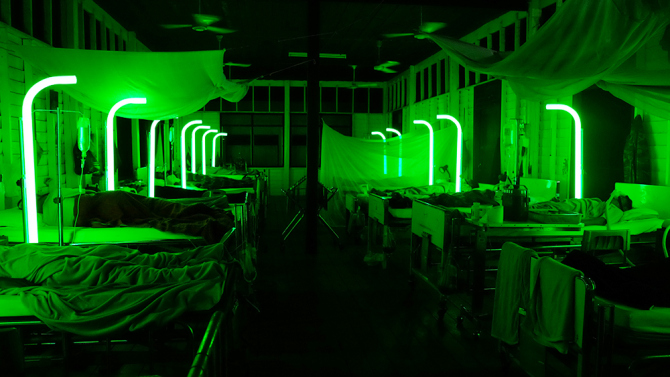
9. CEMETERY OF SPLENDOUR
Director: Apichatpong Weerasethakul
Genre: Drama
Following his Palme D’or win for UNCLE BOONMEE WHO CAN RECALL HIS PAST LIVES, Apichatpong Weerasethakul premiered CEMETERY OF SPLENDOR in the Une Certain Regard category at last year Cannes film festival. At Sundance, the Thai director’s avant-garde project was met with expectedly mixed reactions, prompting a number of walk-outs, but leaving a handful of cinephiles firmly locked in their seats. To a degree, Weerasethakul’s work is bound to be a polarizing experience at a festival that is mostly populated by crowds looking for the next hip, indie darling, not the most academic piece of high-brow cinema, and boy, does CEMETERY OF SPLENDOR qualify as the latter. Shot entirely in static compositions (much like his previous efforts) that aesthetically channel the works of Ozu, CEMETERY OF SPLENDOR balances the mysticism of East Asian cinema with the spatial explorations of Antonioni. By using his milieu to photograph the seemingly mundane in order to make a comment on mortality through the cyclical and rather nihilistic process of ceiling fans, escalators, water mills, and the aesthetically appealing, temperature-shifting neon lights inside of a military infirmary. As these lights change color, so do the colors in the world surrounding the film’s characters. Weerasethakul’s film is dreamy and often beautiful, and although it’s certainly a tough pill to swallow, it’s certainly worth checking out for the sheer novelty of seeing avant-garde cinema from Thailand. [Sergio Zaciu]
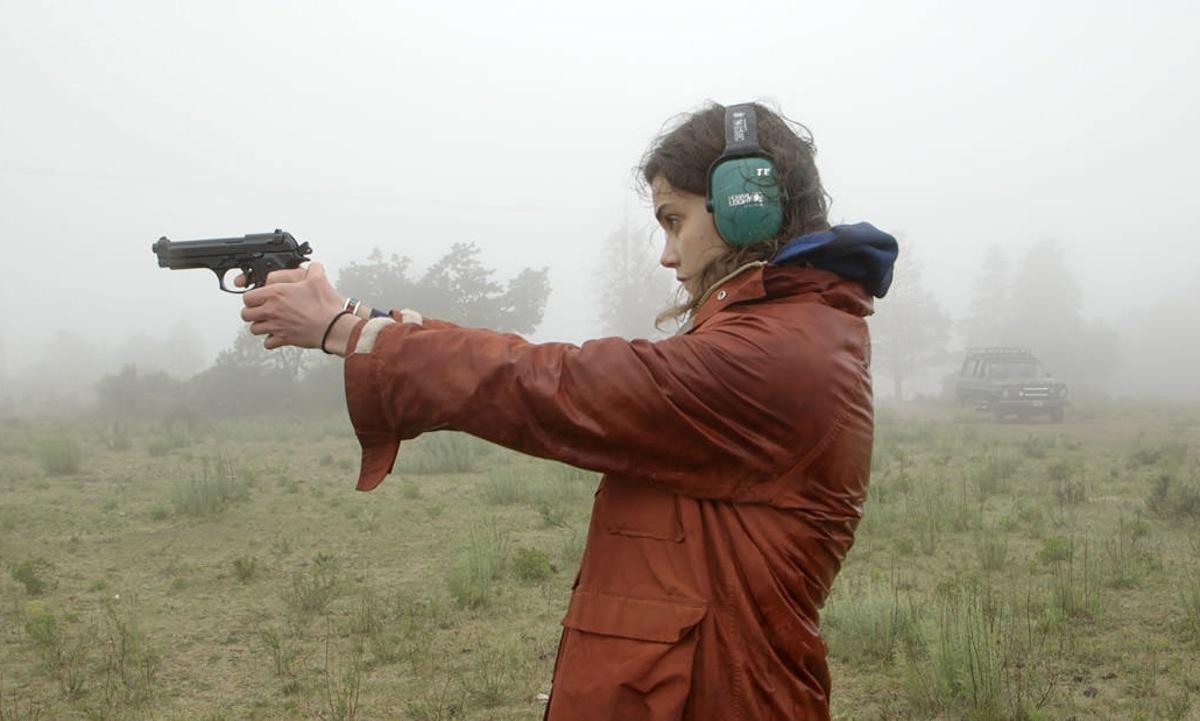
8. JACQUELINE (ARGENTINE)
Director: Bernardo Britto
Genre: Mockumentary
For Director Bernardo Britto (GLOVE, YEARBOOK), JACQUELINE (ARGENTINE) is a tremendous first-time feature that demonstrates a carefully crafted evolution of his style and a poignant commentary on why people tell stories. A faux-documentary about Jacqueline Dumont, a French diplomat who discovers an assassination plot because of an email mix-up, JACQUELINE (ARGENTINE) plays as a spoof of Snowden’s experience post-NSA leak. Jacqueline exiles herself to Argentina and hires a documentary crew to tell her story in case the elaborate conspiracy she is now caught up in kills her, and JACQUELINE (ARGENTINE) is ostensibly the documentary they made. What’s fascinating about the film is how Britto is able to balance a fairly competent political thriller with a comedic examination of life in Argentina under political asylum. Jacqueline believes that her story will change the world and her place in it—the same misguided assumption that many artists make when embarking on a creative endeavor. In this way, through the comedic performances of Wyatt Cenac and Camille Rutherford, Britto is able to have his cake and eat it too by creating a beguiling mystery and an existential examination of art’s purpose. [Ian Campbell]
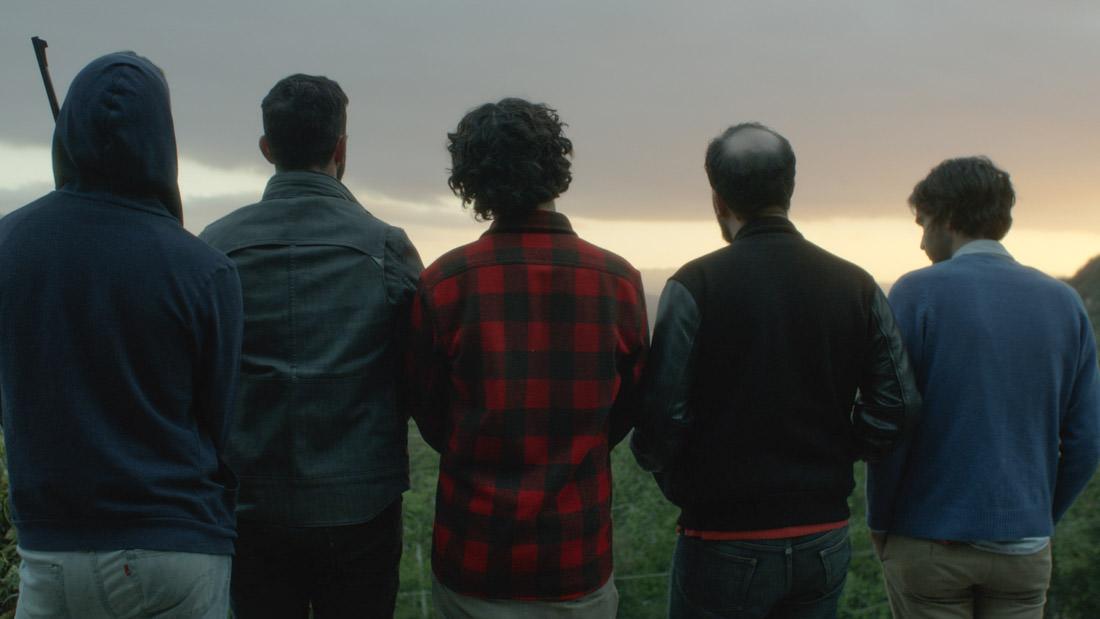
7. JOSHY
Director: Jeff Baena
Genre: Comedy
What for many sounds like little more than a B-rate THE HANGOVER is actually one of the more endearing comedies of this year’s festival. JOSHY doesn’t necessarily bring anything new to the table, but it sure as hell has great farcical timing that allows for over-the-top, yet less extravagant, bachelor party shenanigans. However, where JOSHY really sets itself apart is in its dramatic beats. Unfortunately, these are far and few between, but when they occur, they catapult the audience straight out of their escapist comedy and back down to earth in order to face the truths behind these characters’ personal dramas. There’s a fraternal sensibility to JOSHY that helps make it feel refreshingly genuine, and thanks to strong performances, it’s quite an enjoyable ride. Having said all of that in its favor, it is quite disappointing that a film that has so much going for it in tonal shift is so sloppy in its visual execution, using its shaky-cam aesthetic as nothing more but a point-and-shoot approach to capturing the comedians on screen. If the film would have been a little more polished and visually tightened, it could have been the festival’s best comedy. Unfortunately, though, it falls just a little short for playing its cards so safe. [Sergio Zaciu]
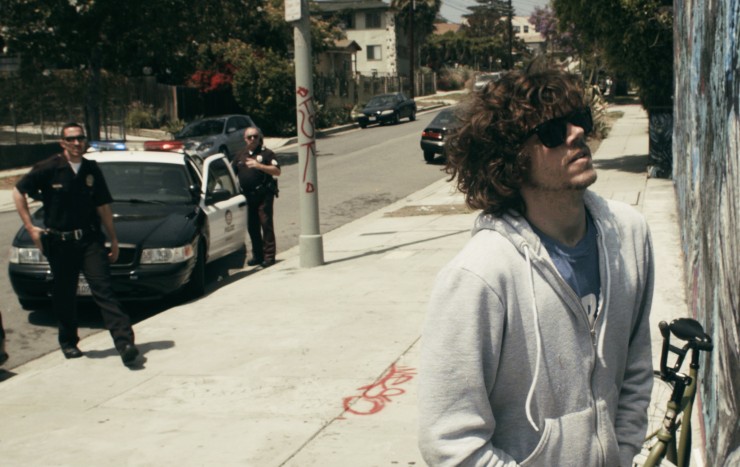
6. THE 4TH
Director: Andre Hyland
Genre: Comedy
A film so carefree that it feels quintessentially Sundance, both in its lo-fi aesthetic and naturalistic performances, THE 4TH plays out as the most taxing viewing experience of the Sundance Film Festival, constantly frustrating viewers as its naive yet endlessly sympathetic protagonist is thrust from one inconvenience to the next, all because he forgot some lighter fluid back at the supermarket. Not only brilliant in its simplicity, THE 4TH also works as a modern revitalization of the neo-realist traditions brought forth by De Sicca in THE BICYCLE THIEVES, exchanging the societal commentary of the Italian movement for a more alienating portrayal of what might be the most “LA movie” of the year. This growing subgenre feels like a welcome trend of exploring the pedestrian life of middle-to-low income Angelenos, and seems to have been kicked into full throttle with last year’s TANGERINE. Now, sure, it might be going a little far to read into THE 4TH so heavily. After all, it’s mostly dumb, unabashed fun. But the film carries an important aura that allows for it to feel like a fresh, new approach to tackling a city that long has been explored on four wheels. Also, truck nuts. [Sergio Zaciu]
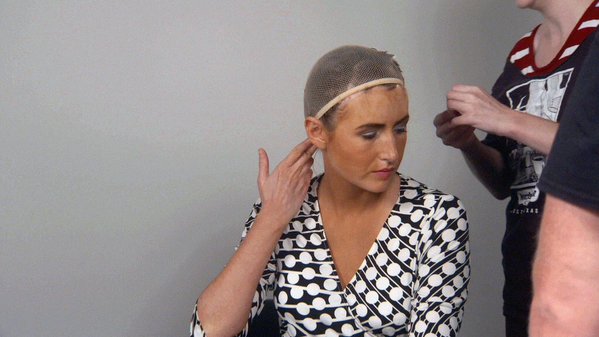
5. KATE PLAYS CHRISTINE
Director: Robert Greene
Genre: Documentary
The only thing harder than watching KATE PLAYS CHRISTINE is trying to describe it with any amount of clarity or precision. A “nonfiction film” rather than an all-out documentary, KATE PLAYS CHRISTINE is, on the surface, detailing actress Kate Lyn Sheil’s (THE HEART MACHINE) method of preparing for the role of Christine Chubbuck, a Florida news anchor who committed suicide live on the air. The wrinkle is, of course, that there is no film and Kate Lyn Sheil is not just playing Christine, she’s playing a fictionalized version of herself. The nonfiction film is then not only revealing Sheil’s methods as an actress (the relative truth of her style is open to interpretation given the circumstance), but also commenting on the ethics of making a film about suicide, especially a suicide with its own contradictions and problems. The fact that KATE PLAYS CHRISTINE is playing at a festival with another fictionalized version of the Chubbuck story (CHRISTINE) only serves to add another layer of intrigue, especially given the ending of KATE PLAYS CHRISTINE. Additionally, Sheil’s struggle to play the character is fascinating to watch and oftentimes incredibly uncomfortable. That, combined with interviews that share controversial views on the actual Christine’s intentions, create a film that can be incredibly hard to get through, let alone enjoy. Just as it challenges the topics it covers, KATE PLAYS CHRISTINE challenges its audience for watching it, for liking it, and for wanting to be seen. [Ian Campbell]
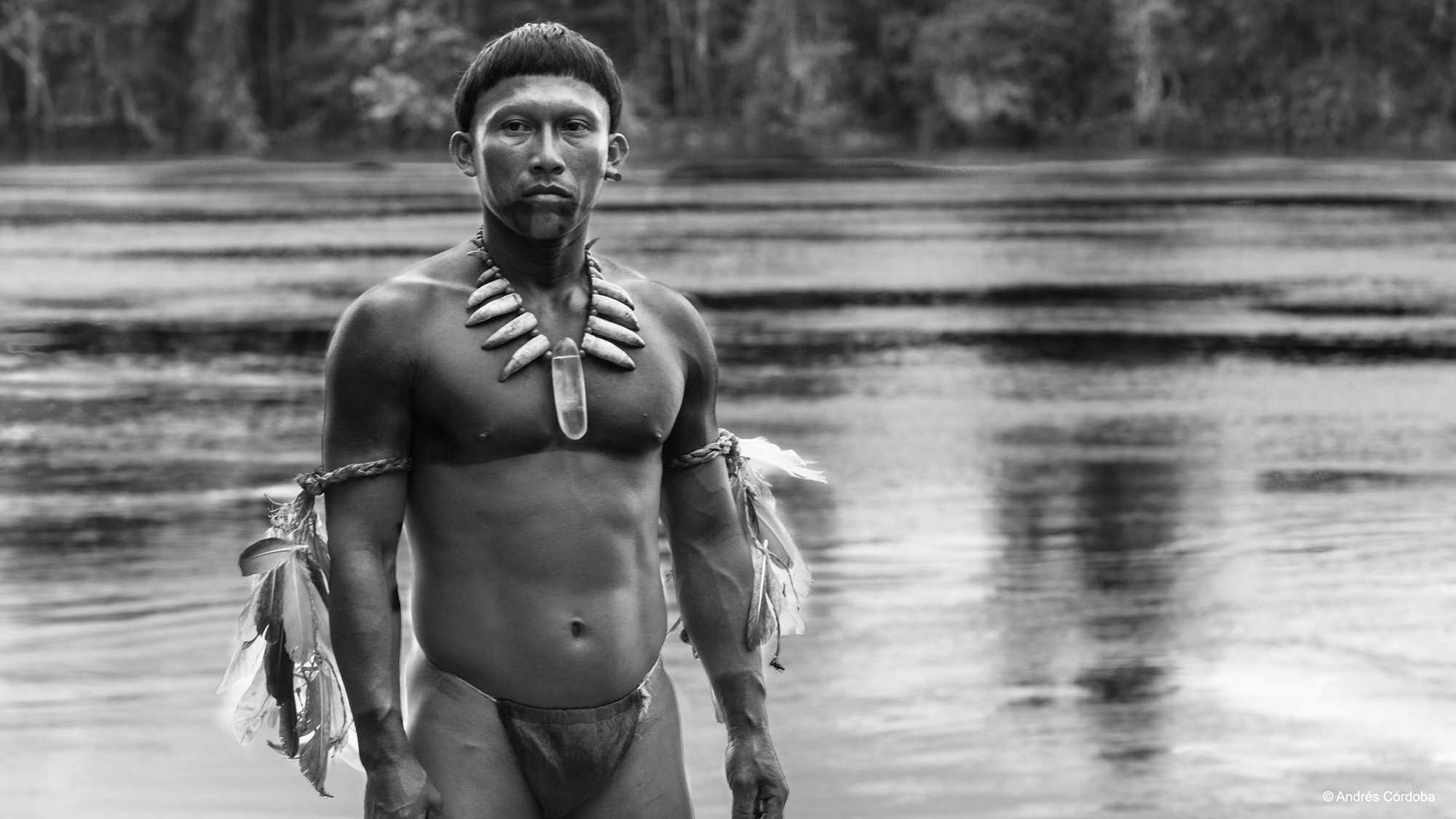
4. EMBRACE OF THE SERPENT
Director: Ciro Guerra
Genre: Drama
A haunting reflection upon cultural identity, imperialism, and religion, EMBRACE OF THE SERPENT reigns triumphant with morally ambiguous characters, beautiful black-and-white cinematography, and harrowing scenes portraying the results of Western encroachment upon the Amazon. Telling the story of Amazonian shaman Karamakate as he guides German scientists through the jungle in both 1909 and 1940 as they search for the yakruna plant, this film is the mystical one that can seamlessly hop between time periods without feeling disjointed or jumbled. This is due largely in part to the powerful overarching themes connecting the two separate journeys, as Karamakate must struggle with his impending demise (which signals the entire eradication of his tribe) and the way in which Western culture is affecting monolithic changes in the world that he calls his own. No character is to be trusted, but each of them possesses objectively correct reasons for their arcs of treachery and deceit. Reminiscent of early Herzog and often extremely disturbing while remaining masterfully subtle (the segment wherein Karamakate finds himself in the compound of a religious cult is quietly nightmare-inducing), EMBRACE OF THE SERPENT is an explosive third outing from Ciro Guerra that debates the best way to leave one’s mark upon the world, and at what cost? [Thomas Seraydarian]
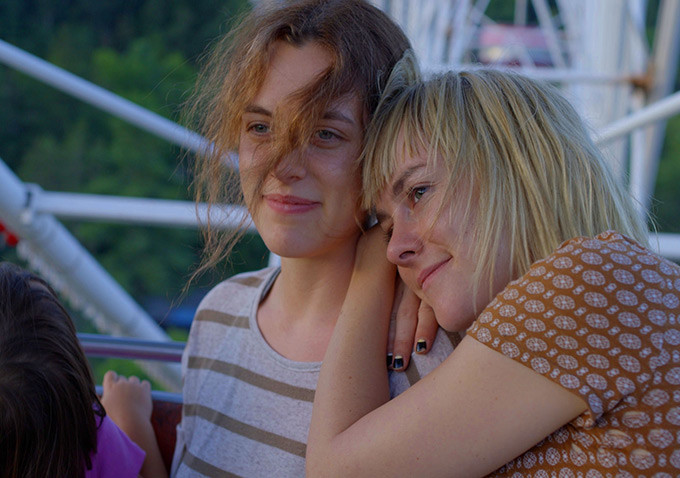
3. LOVESONG
Director: So-yong Kim
Genre: Drama
LOVESONG does a lot with very little, and in a culture of excess where spectacle, big ideas, and melodrama are valued over sincerity, that has to be commended. Starring Riley Keough (MAD MAX: FURY ROAD) as Sarah and Jenna Malone (HUNGER GAMES: CATCHING FIRE) as her college friend Mindy, Director So Yong Kim crafts a story of friends reconnecting and deepening their relationship during an impromptu road trip spurred on by Sarah’s difficulty raising her child while her husband travels. LOVESONG explores the often blurry boundary between friendship and something more, and lands on a conclusion that is bittersweet and all too honest. Feelings of affection that can just as easily slip from jealousy to lust and right back to platonic compassion are the bread and butter of LOVESONG, and Kim and her actors navigate those stormy waters with aplomb. The minimalist style that Kim uses in the visuals of her film extend into the performances, with close-ups of the faces of the two actors often saying far more than their playful dialogue. LOVESONG is not about slavery or religion or a magical rotting corpse, so it has, and most likely will, receive very little attention, but maybe that is for the best. Some gems are better in the rough. If you’re willing to dig, I promise that LOVESONG will not disappoint. [Ian Campbell]
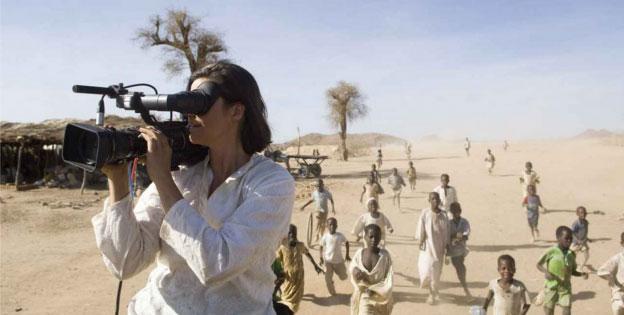
2. CAMERAPERSON
Director: Kirsten Johnson
Genre: Documentary
In a mind-blowing passion project 25 years in the making, documentary cinematographer Kirsten Johnson—who has worked on everything from CITIZENFOUR to THE INVISIBLE WAR—has finally released what can best be described as a personal memoir and consequent lecture about the power of cinema and the ethical responsibility that comes with being a documentarian. Composed of footage (often outtakes) from incomplete previous docs and some of the more famous projects Johnson was involved in, CAMERAPERSON is thoroughly engaged with the question of what it means to compose a shot, how to relay information, when to inform an audience, and how tampering with an environment may add a layer of deceitfulness to a genre that ought to be a pure, unfiltered form of capturing real life on camera. Part vignettes, part comprehensive overview of Johnson the person and filmmaker, the film is both personal yet never self-indulgent. While sporadically jumping in time and space, Johnson composes a city symphony that has no equal, rather focussing on the philosophical qualities of life, death, age, and memory, ultimately combining her message on the medium of film with a more universal discussion on the contemporary climate of camera phones. Now that everyone can be a filmmaker, Johnson has urged her audience to consider what implications this carries, and as a result has created one of the most staggering cinematic accomplishments in modern cinema; truly a film for the ages, and one that will certainly be studied by film students in the years to come. [Sergio Zaciu]
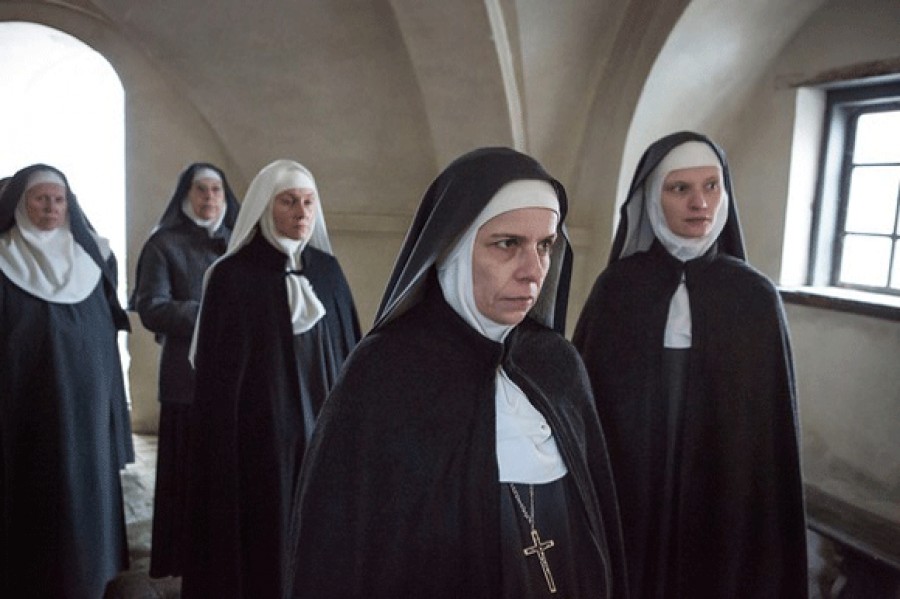
1. AGNUS DEI
Director: Anne Fontaine
Genre: Drama
The subject of religion and faith allows for fascinating explorations into the human psyche. Anne Fontaine’s AGNUS DEI is possibly one of the finest discussions of religious and moral responsibility, channeling all of the best qualities of Cristian Mungiu’s 2012 masterpiece, BEYOND THE HILLS. This true story about a Polish convent that is raped and impregnated by Russian Soldiers at the end of the Second World War was met with a huge standing ovation at the 2016 Sundance Film Festival and tells a morality tale that expertly blends tragedy with short bursts of levity. Fontaine’s assured camerawork and intrinsic understanding of every character’s moral obligation towards God allows for the film to discuss the complexities between chastity and pure sexual pleasure, as well as the familial bond that forms a mutual respect among the hierarchical ranks that make up the convent. Perhaps Fontaine’s greatest achievement is that despite the uniform costuming of her rather large ensemble cast, each nun is still distinctly their own person. Picturesque and brilliantly performed, AGNUS DEI is a clear festival highlight, and although it would have been fascinating to see a similar narrative being addressed in a milieu that isn’t quite as done-to-death as World War Two (Fontaine mentioned that this also happened in Vietnam), it is a remarkable achievement that her film never really feels like something that’s been seen before. [Sergio Zaciu]




1 Response
[…] has some kind of presence at Sundance, from last year’s CASTING JONBENET to earlier entries like CAMERAPERSON or KATE PLAYS CHRISTINE, but they never quite reach the acclaim of traditional documentaries that […]